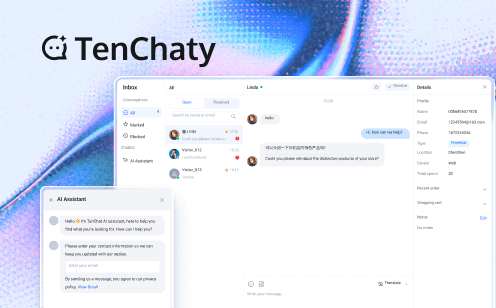
In today's digital age, Zoom has become an indispensable tool for remote communication, connecting colleagues, friends, and families across the globe. As we continue to navigate the complexities of virtual interactions, it's crucial to maximize the impact and inclusivity of our Zoom meetings. One powerful way to achieve this is by utilizing auto captions. In this comprehensive guide, we'll explore the compelling reasons to use auto captions, how to implement them, and even introduce an advanced solution for those seeking superior captioning capabilities.
Introduction
Zoom's popularity has skyrocketed, becoming a household name for video conferencing. Whether you're conducting business meetings, hosting virtual events, or catching up with loved ones, Zoom provides a platform for seamless communication. However, as our reliance on virtual meetings grows, so does the need to ensure these interactions are as effective and inclusive as possible.
Enter auto captions – a feature that can significantly enhance your Zoom experience. By providing real-time text of spoken words, auto captions open up a world of possibilities for improved communication, accessibility, and engagement. Let's delve into the four key reasons why you should consider using auto captions in your Zoom meetings.
1. Enhanced Flexibility for Attendees
In our fast-paced world, flexibility is key. Auto captions provide that flexibility in spades, catering to various scenarios that your meeting attendees might face.
Imagine a participant joining your meeting from a bustling café or a noisy home environment. Without auto captions, they might struggle to follow the conversation, potentially missing crucial information. With captions enabled, they can read along, ensuring they don't miss a beat despite their surroundings.
Similarly, there may be situations where attendees can't use audio – perhaps they're in a quiet library or forgot their headphones. Auto captions allow these participants to stay fully engaged in the meeting without disrupting their environment or feeling left out.
Moreover, auto captions serve as the foundation for creating accurate meeting transcripts. These transcripts are invaluable for those who couldn't attend the live meeting or for participants who want to review the content later. It's a simple way to ensure that no one misses out on important information, regardless of their ability to attend the live session.
2. Improved Engagement and Comprehension
The benefits of auto captions extend far beyond mere convenience. Research has consistently shown that captions can significantly enhance comprehension and engagement for all participants, not just those with hearing difficulties.
Studies in educational settings have demonstrated that students who watch video content with captions show improved comprehension and retention of information. This principle applies equally to business meetings and presentations. By providing a visual reinforcement of spoken words, auto captions help participants better process and remember the information being shared.
For complex topics or meetings filled with industry-specific jargon, captions can be particularly beneficial. They allow participants to see unfamiliar terms spelled out, making it easier to look up definitions or make accurate notes.
Furthermore, captions can help maintain focus during longer meetings. It's natural for attention to wander during extended video calls, but the presence of captions provides an additional sensory input that can help keep participants engaged and alert.
By improving comprehension and engagement, auto captions can lead to more productive meetings. Participants are more likely to retain key points, ask informed questions, and contribute meaningfully to discussions when they have a clear understanding of what's being said.
3. Increased Accessibility
Perhaps the most crucial reason to use auto captions is the dramatic improvement in accessibility they provide. In a world striving for greater inclusivity, making your Zoom meetings accessible to as wide an audience as possible should be a top priority.
According to the World Health Organization, over 5% of the world's population – or approximately 466 million people – have disabling hearing loss. For these individuals, auto captions can be the difference between full participation and exclusion from virtual meetings.
But the benefits of captions extend beyond those with hearing impairments. In our globalized world, it's common to have meeting participants who are not native speakers of the language being used. For these individuals, captions can provide crucial support, allowing them to follow along more easily and participate more confidently.
Even for native speakers, captions can be helpful in catching names, technical terms, or unfamiliar phrases that might otherwise be missed. This can be particularly valuable in professional settings where accurate understanding is critical.
By enabling auto captions, you're sending a clear message that you value inclusivity and are committed to ensuring all participants can engage fully with your content. This not only makes your meetings more accessible but also fosters a more inclusive and diverse environment.
4. Greater Participant Satisfaction
When you combine the flexibility, improved engagement, and increased accessibility that auto captions provide, the result is a more satisfying experience for all meeting participants.
Attendees appreciate when hosts make an effort to accommodate different needs and preferences. By offering auto captions, you're demonstrating consideration for your participants' diverse circumstances and learning styles. This can lead to increased goodwill and a more positive perception of your meetings or organization.
For business contexts, this improved satisfaction can translate into tangible benefits. Clients or colleagues are more likely to engage positively with your content and remember your message when they've had a good experience. This can lead to stronger relationships, improved collaboration, and potentially even business growth.
Even in social settings, the use of captions can enhance the experience. It ensures that everyone can participate fully in the conversation, leading to more inclusive and enjoyable virtual gatherings.
How to Turn On Auto Captions in Zoom
Now that we've explored the benefits of auto captions, let's look at how to enable this feature in Zoom. The process varies slightly depending on whether you're an account owner/admin or an individual user.
For account owners and admins:
- Sign in to the Zoom web portal.
- Navigate to Account Management > Account Settings.
- Click the Meeting tab.
- Under In Meeting (Advanced), verify that Closed Captioning is enabled.
- If the setting is disabled, click the toggle to enable it.
- If a verification dialog appears, choose Turn On to verify the change.
For individual users:
- Sign in to the Zoom web portal.
- Click Settings.
- Click the Meeting tab.
- Under In Meeting (Advanced), verify that Closed Captioning is enabled.
- If the setting is disabled, click the toggle to enable it.
To activate captions during a meeting:
- As the host, click on the Closed Caption (CC) button in your meeting controls.
- Select Enable Auto-Transcription.
- Captions will now appear for all participants who have them turned on.
Managing Zoom Closed Captioning
Once you've enabled auto captions, there are several ways to manage and optimize them:
Adjusting caption settings:
- Participants can change the font size of the captions by clicking on the up or down arrow next to the CC button.
- The position of captions on the screen can be adjusted in the Zoom desktop client settings.
Saving and sharing transcripts:
- After the meeting, the host can access the transcript by going to the Recordings section of the Zoom web portal.
- Click on the recording you want to view.
- You'll see options to view, download, or share the transcript.
How to Turn Off Auto Captions
While auto captions are generally beneficial, there may be times when you want to turn them off. Here's how:
Disabling during a meeting:
- Click on the Closed Caption (CC) button in your meeting controls.
- Select Disable Auto-Transcription.
Turning off for your account:
- Follow the same steps as enabling captions, but toggle the Closed Captioning setting to off instead of on.
Limitations of Zoom Auto Captions
While Zoom's auto captions are a valuable tool, it's important to be aware of their limitations:
Accuracy considerations: Like all AI-powered transcription services, Zoom's auto captions aren't perfect. They may struggle with accents, fast speech, or background noise.
Language availability: As of now, Zoom's auto captions are primarily designed for English, with limited support for other languages.
TRTC: An Advanced Captioning Solution
For those seeking a more robust captioning solution, Tencent Real-Time Communication (TRTC) offers an advanced alternative. TRTC is a leading real-time communication service that provides high-quality audio and video capabilities, including superior captioning features.
Advantages over Zoom's built-in captioning:
- Higher accuracy rates: TRTC uses advanced AI models to provide more accurate transcriptions, even in challenging audio environments.
- Broader language support: TRTC offers captioning in a wide range of languages, making it ideal for multilingual meetings.
- Customizable AI models: For specialized industries or use cases, TRTC allows for the training of custom language models to improve accuracy for specific terminology.
Integration possibilities: TRTC can be integrated with various platforms, including Zoom, to provide enhanced captioning capabilities. This allows you to leverage TRTC's advanced features while still using Zoom as your primary meeting platform.
Conclusion
Auto captions are a powerful tool for enhancing the effectiveness and inclusivity of your Zoom meetings. By providing flexibility, improving engagement and comprehension, increasing accessibility, and boosting overall participant satisfaction, auto captions can transform your virtual communication experience.
We encourage you to start using auto captions in your Zoom meetings today. Experiment with the settings, gather feedback from your participants, and see the positive impact for yourself. And for those with more advanced needs, consider exploring TRTC as a comprehensive solution for high-quality, multilingual captioning.
In our increasingly digital world, effective communication is key. By embracing tools like auto captions, we can ensure that our virtual meetings are as impactful, inclusive, and engaging as possible. Here's to better, more accessible Zoom meetings for all!


